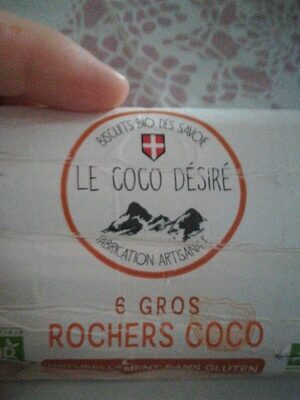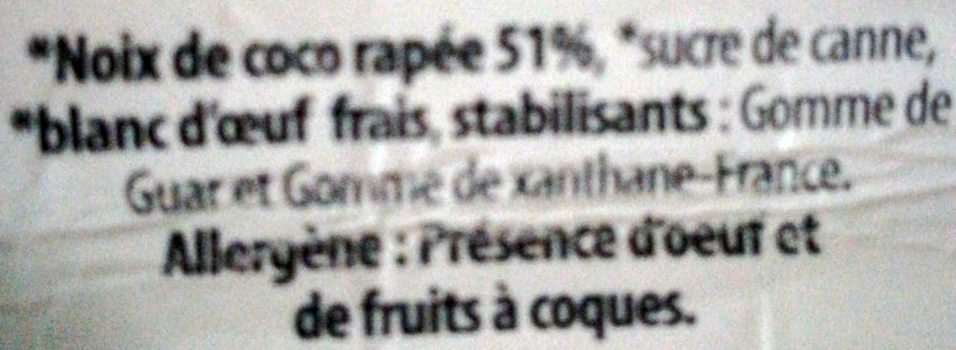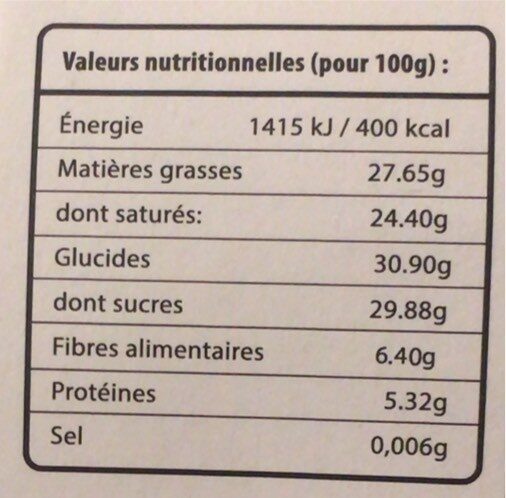Le coco désiré - Biscuits Bio des Savoie - 150 g
This product page is not complete. You can help to complete it by editing it and adding more data from the photos we have, or by taking more photos using the app for Android or iPhone/iPad. Thank you!
×
Barcode: 3770010965145 (EAN / EAN-13)
Common name: 6 gros rochers à la noix de coco - Le Coco Désiré
Quantity: 150 g
Brands: Biscuits Bio des Savoie
Categories: Snacks, Sweet snacks, Frozen foods, Biscuits and cakes, Pastries, Coconut Macaroons, Savoy-style sponge cake
Labels, certifications, awards:
No gluten, Organic, EU Organic, Artisanal production, AB Agriculture Biologique

Manufacturing or processing places: France, Savoie
Countries where sold: France
Matching with your preferences
Environment
Carbon footprint
Packaging
Transportation
Labels
Report a problem
Data sources
Product added on by kiliweb
Last edit of product page on by quechoisir.
Product page also edited by beniben, ecoscore-impact-estimator, gmlaa, openfoodfacts-contributors, packbot, yuka.R2JrcEZvQlpxLzlicFBNNXhCTGZvZDEvNjdxdlIwU1BJY0FvSVE9PQ, yuka.UkpvdEw0SXVwZDhNc3NGazJEM0grT3RGM1lXMFVraXpDT2c5SUE9PQ, yuka.Uy9vdE1LTWxyZlVHaHRvUDhpTHE0Lzl4bG9LdFFVcVhjclVvSVE9PQ, yuka.sY2b0xO6T85zoF3NwEKvlkYZXODPvh-eCRbuiXKTyIqlNKbTOPpO-YXANag.












